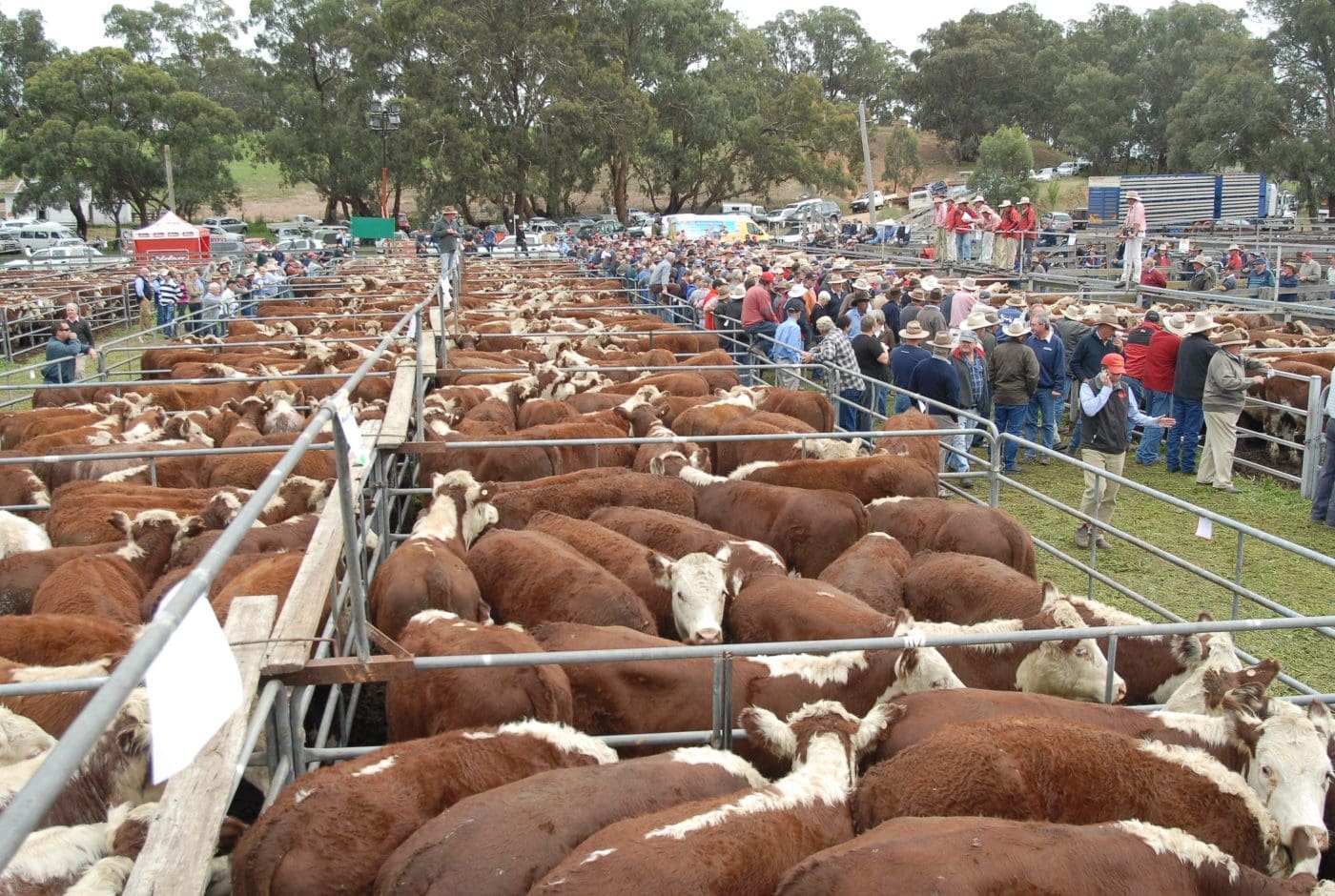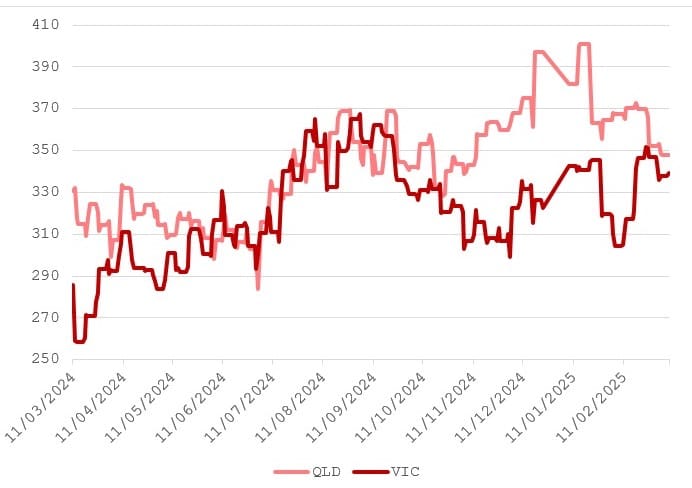NORTHERN and southern feeder steer markets detached from each other during the last Spring as the southern wet season failed, leading to an early and sustained turnoff of southern cattle.
At the same time, northern feeder steer markets started to lift as QLD producers held onto cattle and northern feedlots were caught short heading into year’s end.
 As we move into Autumn, it appears that these markets may be about to flip with a shortage of southern feeder cattle seeing premiums emerge across the south.
As we move into Autumn, it appears that these markets may be about to flip with a shortage of southern feeder cattle seeing premiums emerge across the south.
In the last week, southern feedlots have become increasingly active on heavy weight feeder cattle. At the mountain calf sales in Victoria (where it was unusually dry and dusty), prices of 420-460c/kg lw were paid for heavy feeders both black and coloureds with prices up to $200-250/head dearer than last year.
Lighter black cattle also sold well with the weak spot, light coloured heifers and steers which were selling for under 300c/kg. For what it is worth, our local agent reckons the Herefords presented better than the black cattle being better foragers in that high country when conditions are tight.
c/kg lw prices VIC vs QLD

c/kg lw saleyard indicator prices for Victorian and Queensland feeder steers. Source: MLA
Some grass finishers were also active on these cattle, no doubt encouraged by grassfed contract prices for program cattle of 750c/kg dw for April out to 830c/kg dw August, as processors act to lock-in future supplies.
Generally, these grassfed program contract prices are only available out a month or two. Offering contracts out to August suggests that processors are concerned about future supplies of cattle suitable for these programs.
In another sign of the difference in feeder availability between the north and south, the Angus premium has widened out to +30c/kg lw over flatbacks. This premium virtually disappeared late last year as markets were flooded with southern feeder cattle and supplies of flatbacks were tight across the north.
Queensland
In QLD, feeder markets were disrupted by the closure of the Brisbane port which has thrown the whole south-east QLD cattle supply chain into chaos. Cold storages are filling, and works have stopped killing with key roads into Brisbane closed.
This will throw the whole supply chain out by at least a week and up to two which will place pressure on northern feeder prices in coming weeks as feedlots are unable to turn out cattle.
In contrast to the south, where cattle herds have been trimmed in recent years, herd sizes in QLD are large, which is seeing northern feeder steer markets well-supplied. Numbers will continue to come forward at pace until another general rain is received across the north.
In NSW, most areas are now in desperate need of some rain. The failure of ex tropical cyclone Alfred to deliver forecast rainfall has the NSW season in balance. While not desperate, most areas are very dry and without rain soon, supplies will increase which will help alleviate some of the supply tightness further south.
Feeder prices held stable last week at 370-380c/kg lw (+30c/kg lw on 100pc Angus) with saleyard prices rising to match levels that have been quoted on paddock sales.
Our agents are starting to get some increased inquiry from feedlots they don’t generally hear from, offering delivered prices for the following week, indicating they are struggling to secure supplies from normal vendors.
Any sort of decent seasonal break across VIC/SA will see supplies tighten dramatically. Otherwise, these markets will increasingly to be dominated by cattle of store condition.
The first of the Tasmanian weaner sales started last week with good Angus steers making 360-390c/kg lw with the higher prices paid for the lighter end, heifers 320-330c with about 30pc of the offering going to backgrounders on the mainland.
Elders has a weaner sale of 2600 head at Powranna this week which will provide another test for the Tassie feed-on market.
Western Australia
In WA, feeder cattle prices jumped 20c/kg lw, with lotfeeders active on cattle 280-380kg paying up to 380c/kg lw for steers to average 350c, and heifers to 320c/kg to average 310c.
Lighter store type cattle were down a bit, with anything less than 280kg discounted, steers around 320c/kg lw and heifers around 260c, with demand down from areas that would normally take these cattle due to the lack of available feed and water.
- Author Richard Koch is Elders’ Business Intelligence Analyst.

HAVE YOUR SAY